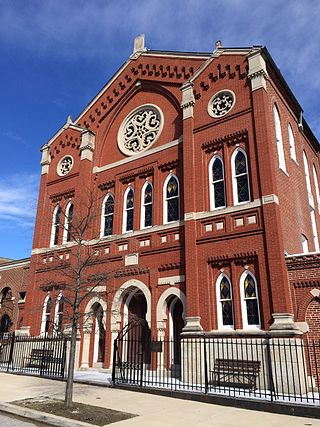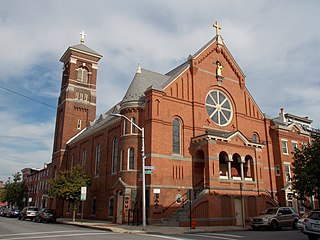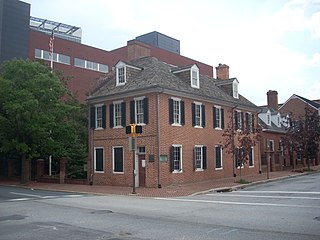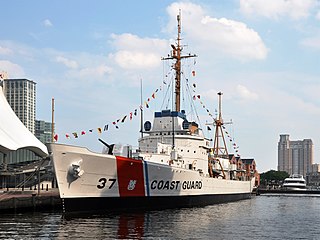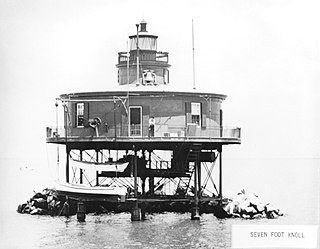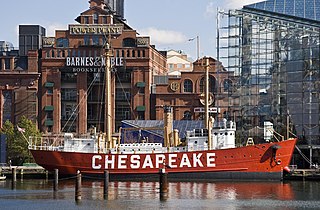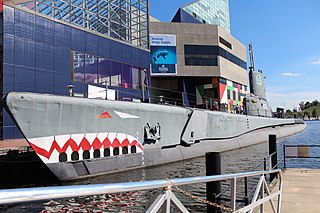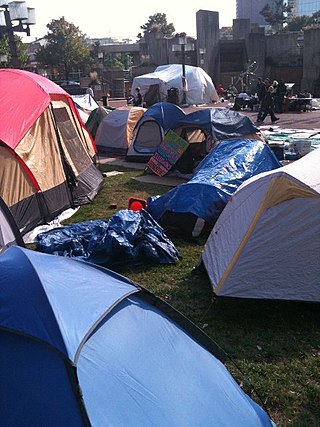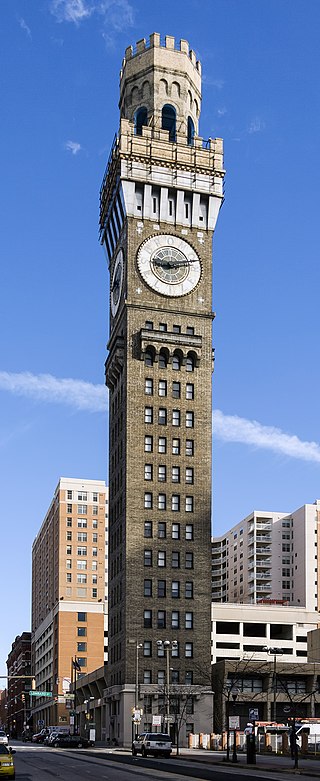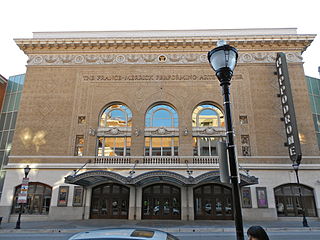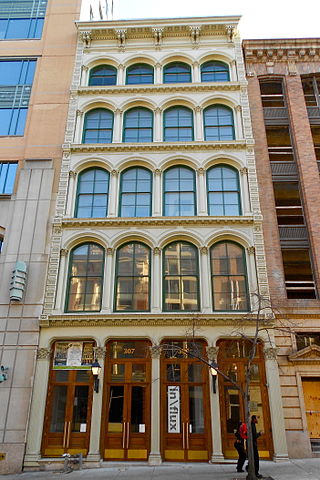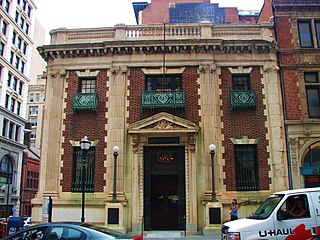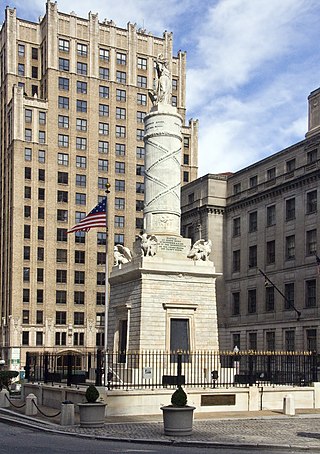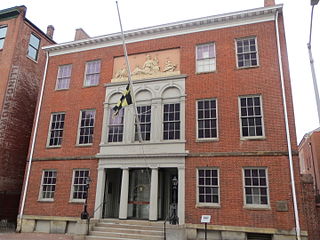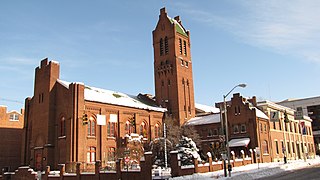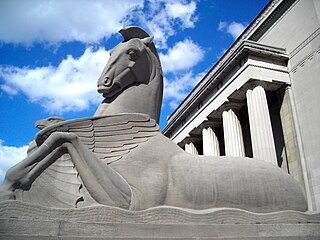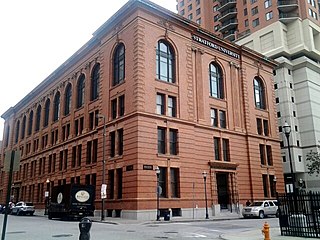Self-guided Sightseeing Tour #3 in Baltimore, United States
Legend
Tour Facts
9.2 km
246 m
Experience Baltimore in United States in a whole new way with our free self-guided sightseeing tour. This site not only offers you practical information and insider tips, but also a rich variety of activities and sights you shouldn't miss. Whether you love art and culture, want to explore historical sites or simply want to experience the vibrant atmosphere of a lively city - you'll find everything you need for your personal adventure here.
Activities in BaltimoreIndividual Sights in BaltimoreSight 1: Church Hospital
Church Home and Hospital was a hospital in Baltimore, located on Broadway, between East Fayette and East Baltimore Streets, on Washington Hill, several blocks south of the Johns Hopkins Hospital, that also operated a long-term care facility. It was affiliated with the Episcopal Diocese of Maryland of the Episcopal Church . It closed down permanently in 2000 and was later re-opened as a unit known as the "Church Home and Hospital Building" of J.H.H.
Sight 2: Lloyd Street Synagogue
The Lloyd Street Synagogue is a Reform and Orthodox Jewish former synagogue located on Lloyd Street, Baltimore, Maryland, in the United States. The Greek Revival-style building is the third oldest synagogue building in the United States and was the first synagogue building erected in Maryland. The building was listed on the National Register of Historic Places in 1978 and designated as a Baltimore City Landmark in 1971.
Sight 3: Jewish Museum of Maryland
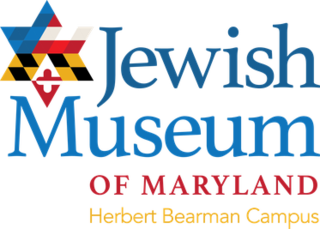
The Jewish Museum of Maryland is located in Baltimore, Maryland, United States. The museum tells the story of the American Jewish experience in the city of Baltimore and throughout the US state of Maryland.
Sight 4: Chizuk Amuno Synagogue;B'nai Israel Synagogue
B'nai Israel Synagogue is a Modern Orthodox synagogue located in the historic Jonestown neighborhood, near downtown and the Inner Harbor of Baltimore, Maryland, in the United States. The synagogue is one of the oldest synagogue buildings in the United States.
Sight 5: Saint Leo Catholic Church
St. Leo's Church is a historic Roman Catholic church complex located within the Archdiocese of Baltimore in Little Italy, Baltimore, Maryland, United States. It is the 'core' of the neighborhood.
Wikipedia: St. Leo's Church (Baltimore, Maryland) (EN), Website
Sight 6: Flag House and Star-Spangled Banner Museum
The Star-Spangled Banner Flag House, formerly the Flag House & Star-Spangled Banner Museum, is a museum located in the Jonestown/Old Town and adjacent to Little Italy neighborhoods of eastern downtown Baltimore, Maryland, United States.
Wikipedia: Flag House & Star-Spangled Banner Museum (EN), Website
Sight 7: Reginald F Lewis Museum of Maryland African-American History and Culture
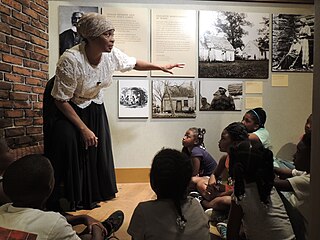
The Reginald F. Lewis Museum of Maryland African American History & Culture is a resource for information about the lives and history of African American Marylanders. The Lewis Museum's mission is to collect, preserve, interpret, document, and exhibit the contributions of African American Marylanders using its collection of over 11,000 documents and objects and resources drawn from across the country.
Wikipedia: Reginald F. Lewis Museum of Maryland African American History & Culture (EN)
Sight 8: USCGC Taney
WPG/WAGC/WHEC-37, launched as USCGC Roger B. Taney and for most of her career called USCGC Taney, is a United States Coast Guard high endurance cutter notable as the last warship floating which fought in the attack on Pearl Harbor. She was named for Roger B. Taney (1777–1864), who served as U.S. Attorney General, Secretary of the Treasury, and Chief Justice of the United States.
Sight 9: Seven Foot Knoll Lighthouse
The Seven Foot Knoll Light was built in 1855 and is the oldest screw-pile lighthouse in Maryland. It was located atop Seven Foot Knoll in the Chesapeake Bay until it was replaced by a modern navigational aid and relocated to Baltimore's Inner Harbor as a museum exhibit.
Sight 10: Chesapeake
United States lightship Chesapeake (LS-116/WAL-538/WLV-538) is a museum ship owned by the National Park Service and on a 25-year loan to Baltimore City, and is operated by Historic Ships in Baltimore Museum in Baltimore, Maryland. A National Historic Landmark, she is one of a small number of preserved lightships. Since 1820, several lightships have served at the Chesapeake lightship station and have been called Chesapeake. Lightships were initially lettered in the early 1800s, but then numbered as they were often moved from one light station to another. The name painted on the side of lightships was the short name of the Light Station they were assigned to and was the daytime visual aspect of the many Aids to Navigation on board lightships. The United States Coast Guard assigned new hull numbers to all lightships still in service in April 1950. After that date, Light Ship 116 was then known by the new Coast Guard Hull number: WAL-538. In January 1965 the Coast Guard further modified all lightship hull designations from WAL to WLV, so Chesapeake became WLV-538.
Wikipedia: United States lightship Chesapeake (LV-116) (EN), Website, Heritage Website
Sight 11: USS Torsk
USS Torsk, hull number SS-423, is a Tench-class submarine built for the United States Navy during World War II. Armed with ten torpedo tubes, the Tench-class submarines were incremental developments of the highly-successful Gato-class submarines that formed the backbone of the US Navy's submarine force during the war. Torsk was laid down at the Portsmouth Navy Yard in June 1944, was launched in September that year, and commissioned in December.
Sight 12: USS Constellation
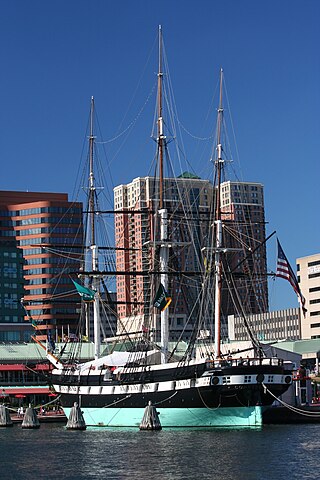
USS Constellation is a sloop-of-war, the last sail-only warship designed and built by the United States Navy. She was built at the Gosport Shipyard between 1853 and 1855. She was named for the earlier frigate of the same name that had been broken up in 1853. The sloop's primary armament was 8-inch (203 mm) shell-firing guns and four 32-pounder long guns, though she carried other guns as well, including two Parrott rifle chase guns. Constellation's career as a front-line unit was relatively short; after entering service in 1855, she served with the Mediterranean Squadron until 1858, and in 1859, she was assigned as the flagship of the Africa Squadron, where she served with the African Slave Trade Patrol. During the American Civil War (1861–1865), the ship returned to the Mediterranean to patrol for Confederate vessels. In late 1864, she returned to the United States to be decommissioned, as most of her crews' enlistments had expired. She spent the rest of the war out of service.
Wikipedia: USS Constellation (1854) (EN), Website, Opening Hours, Heritage Website
Sight 13: Maryland Science Center

The Maryland Science Center (MSC), located in Baltimore's Inner Harbor, opened to the public in 1976. It includes three levels of exhibits, a planetarium, and an observatory. It was one of the original structures that drove the revitalization of the Baltimore Inner Harbor from its industrial roots to a thriving downtown destination. In 1987, an IMAX theater was added, but the museum continued to show its age as the end of the 20th century approached. In May 2004, a large addition to the property was opened, and the modernized hands-on exhibits now include more than two dozen dinosaur skeletons. Subjects that the center displays include physical science, space, and the human body.
Sight 14: McKeldin Square
McKeldin Square is an area of Downtown Baltimore, located near the Inner Harbor at the corners of Pratt and Light Streets.
Sight 15: Wilkens-Robins Building
Wilkens–Robins Building is a historic loft building located at Baltimore, Maryland, United States. It was built in 1871 and is a five-story, six-bay brick structure with a cast iron front. It is approximately 80 feet (24 m) tall, 50 feet (15 m) wide, and 110 feet (34 m) deep with a gently sloping roof. The facade features an expanse of oversized windows and are the highlights of one of the few surviving cast-iron facades in Baltimore.
Sight 16: Emerson Bromo-Seltzer Tower
The Emerson Tower is a 15-story, 88 m (289 ft) clock tower erected in 1907–1911 at 21 South Eutaw Street, at the northeast corner of Eutaw and West Lombard Streets in downtown Baltimore, Maryland. It was the tallest building in the city from 1911 to 1923, until supplanted by the Citizens National Bank building at the southeast corner of Light and Redwood (German) Streets. It was designed by local architect Joseph Evans Sperry (1854–1930) for Isaac Edward Emerson (1859–1931), who invented the Bromo-Seltzer headache remedy.
Sight 17: The Hippodrome Theatre at the France-Merrick Performing Arts Center
The Hippodrome Theatre is a theater in Baltimore, Maryland.
Sight 18: Faust Brothers Building
Faust Brothers Building, also known as the Trading Post, is a historic retail building located at Baltimore, Maryland, United States. It is a five-story brick commercial building with a cast-iron façade above an altered storefront, erected about 1875. It is the only known example of cast-iron fronts on the front and back sides.
Sight 19: Alex. Brown & Sons Building
The Alex. Brown & Sons building is a historic structure located at 135 East Baltimore Street in Baltimore, Maryland. During the 20th century it served as the corporate headquarters for the banking firm Alex. Brown & Sons, the oldest in the United States when it was purchased by Bankers Trust in 1997. The two-story building, completed in 1901 and designed by the partnership of J. Harleston Parker and Douglas H. Thomas. Jr., survived the 1904 Baltimore fire. The building was modified on the Calvert Street side and in the interior by the firm Beecher, Friz, and Gregg in 1905.
Sight 20: Battle Monument
The Battle Monument, located in Battle Monument Square on North Calvert Street between East Fayette and East Lexington Streets in Baltimore, Maryland, commemorates the Battle of Baltimore, with the British fleet of the Royal Navy's bombardment of Fort McHenry, the Battle of North Point, southeast of the city in Baltimore County on the Patapsco Neck peninsula, and the stand-off on the eastern siege fortifications along Loudenschlager and Potter's Hills, later called Hampstead Hill, in what is now Patterson Park since 1827, east of town.
Sight 21: Terminal Warehouse
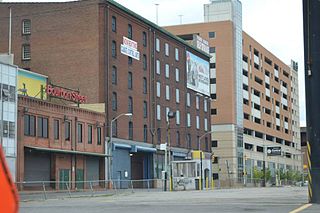
Terminal Warehouse, also known as the Flour Warehouse of Terminal Corporation, is a historic warehouse building located at Baltimore, Maryland, United States. It has a common bond brick exterior accented by a rusticated brownstone foundation built originally in 1894, with a steel beam addition constructed in 1912. It was designed by noted Baltimore architect Benjamin B. Owens.
Sight 22: The Peale
The Peale is a community museum in Baltimore, Maryland, which opened in 2022 after a 5-year renovation. It occupies the first building in the Western Hemisphere to be designed and built specifically as a museum.
Sight 23: Zion Lutheran Church
Zion Lutheran Church, also known as the Zion Church of the City of Baltimore, is a historic Evangelical Lutheran church located in downtown Baltimore, Maryland, United States, founded 1755.
Sight 24: War Memorial Plaza
War Memorial Plaza is a public square, small park and space in Downtown Baltimore between City Hall and the War Memorial Building, between Holliday Street on the west, East Fayette Street on the south, North Gay Street on the east, and East Lexington Street on the north.
Sight 25: Staybridge Suites
The Chamber of Commerce Building is a historic office building located at Baltimore, Maryland, United States. It is a Renaissance Revival-style of architecture with a brown glazed brick building five floors in height, eleven bays long on the west/east sides, facing Commerce Street on the west and Custom House Avenue to the east. Three bays wide (north/south) on the Water Street side, and rebuilt 1904–1905, using still standing walls / facades. It was built during the rebuilding of the old financial district in Downtown Baltimore following the Great Baltimore Fire of Sunday/Monday, February 7–8, 1904 and features many terra cotta decorative elements. The rebuilt structure was designed by well-known Baltimore architect Charles E. Cassell. The original pre-fire building was designed by locally famous and prominent architect John Rudolph Niernsee in 1880 and was used by the old Corn and Flour Exchange, which maintained a trading floor on the fifth level.
Wikipedia: Chamber of Commerce Building (Baltimore, Maryland) (EN)
Sight 26: Port Discovery Children's Museum
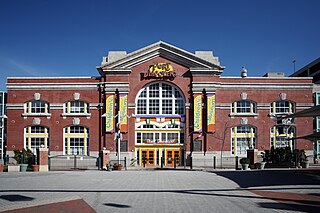
Port Discovery Children's Museum is a non-profit institution located in the historic Fish Market building in Baltimore, Maryland's Inner Harbor. It is 80,000 square feet and has three floors of exhibits and programs designed to be interactive and educational. It receives more than 265,000 visitors annually. The museum's focus is on children ages birth through 10 and their caregivers.
Share
How likely are you to recommend us?
Disclaimer Please be aware of your surroundings and do not enter private property. We are not liable for any damages that occur during the tours.
GPX-Download For navigation apps and GPS devices you can download the tour as a GPX file.

